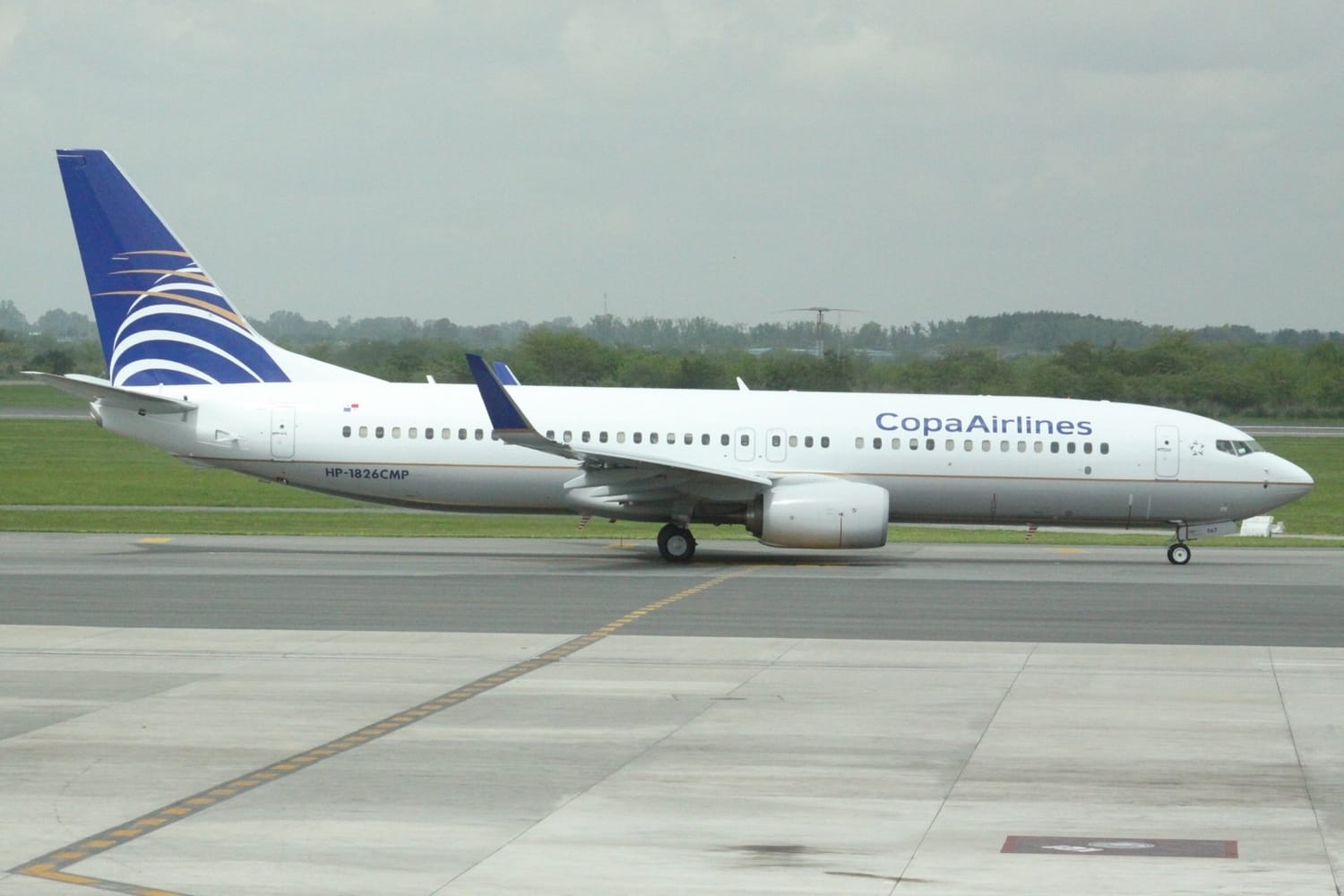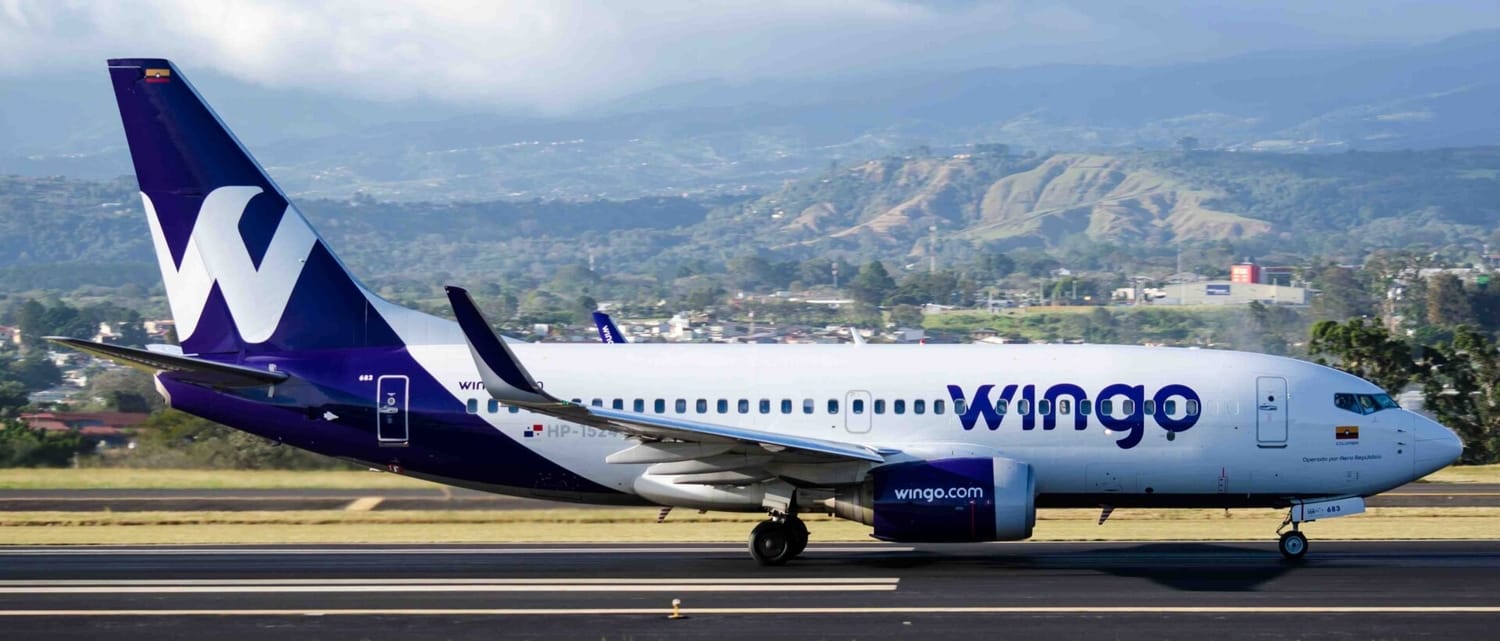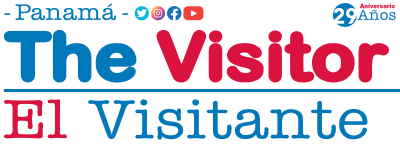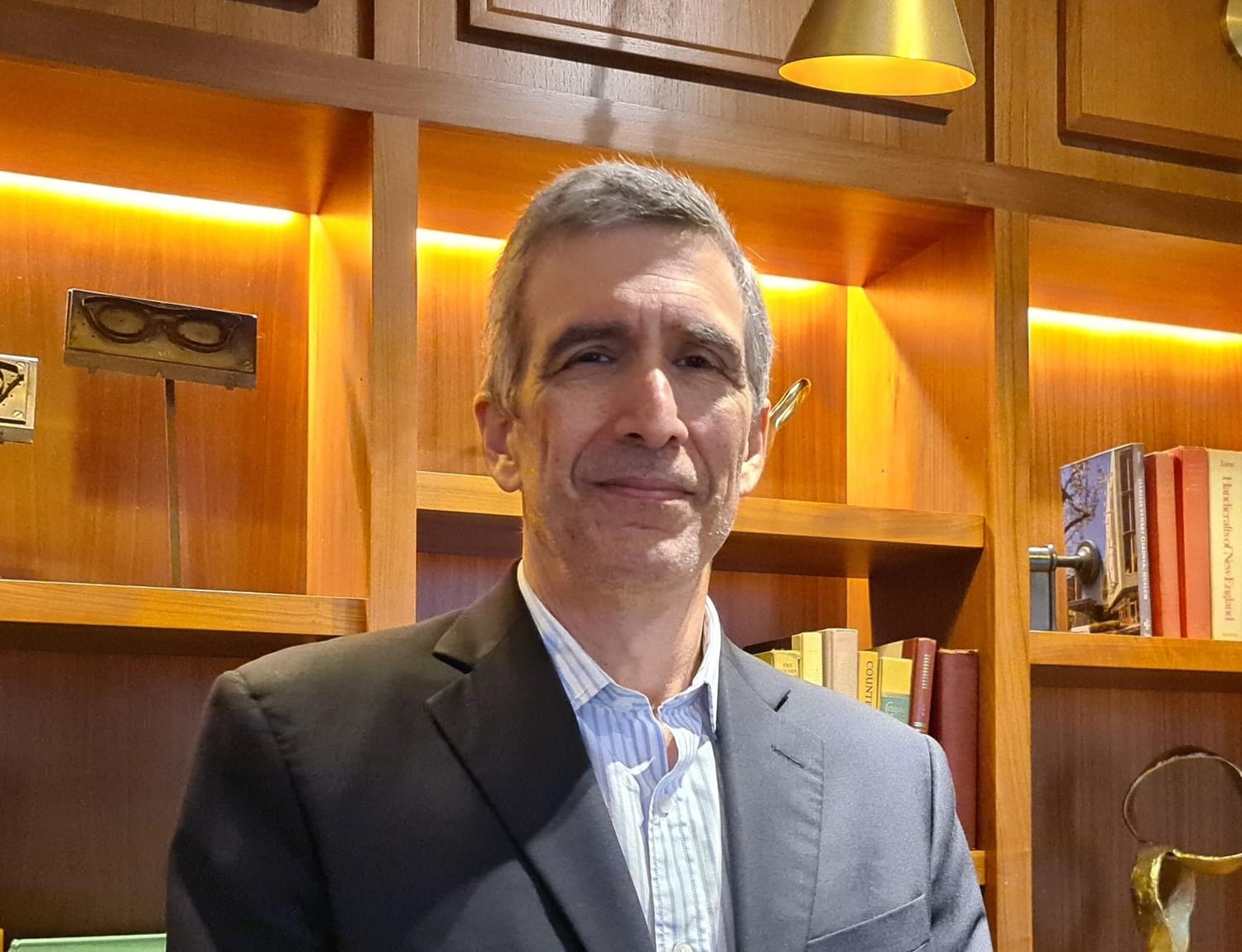
“Nuestro invitado especial en esta edición es un destacado profesional panameño que ha logrado transformar e impulsar la aviación en toda la región. Igualmente, ha sido pieza clave en el crecimiento del aeropuerto de Tocumen como “hub” de las Américas y nuestro turismo panameño. Graduado del College of the Holy Cross en Worcester Massachussetrs, con una licenciatura en economía y de la Universidad de Washington con una Maestría en administración de empresas, Pedro Heilbron logró convertir una aerolínea de sólo dos aviones en 1988 a una con 111 de las más modernas aeronaves de pasajeros hoy en día. Nuestro invitado está repleto de reconocimientos internacionales y en esta entrevista nos habla de su perspectiva de la aviación y el turismo nacional.”
¿Siendo el líder de la aerolínea con mayor crecimiento en la región, qué estrategia emplearía Panamá para lograr un mayor liderazgo en la aviación continental?
“La industria aérea en nuestra región se ha tornado mucho más competitiva desde el inicio de la pandemia. En este sentido, hemos visto un incremento en vuelos punto a punto que compiten con Panamá, al evitar la necesidad de hacer conexiones en hubs como el que operamos en el Aeropuerto Internacional de Tocumen. También, hubs competidores a Panamá en ciudades de la región llevan a cabo importantes inversiones para mejorar su posicionamiento.”
“Para que Panamá pueda retener su liderazgo en conectividad y asegurar que la aviación, incluyendo el turismo que llega por vía aérea, vuelva a contribuir más del 14% del PIB, es indispensable promover una industria aérea competitiva, asegurar un Aeropuerto de Tocumen atractivo y eficiente, y llevar a cabo las acciones para aumentar la llegada de turistas y viajeros de negocio al país.”

El precio en los vuelos define o determina los nuevos grupos de personas que visitan los distintos destinos. Como COPA también es dueña de Wingo, y pronto una nueva aerolínea se avecina, ¿cuál es el futuro de este nuevo segmento y cómo afrontarán la competencia?
“Tanto Copa como Wingo somos subsidiarias de Copa Holdings y nos comercializamos de forma independiente.”
“En Copa Airlines, tenemos una estrategia clara que nos permite competir con éxito ante nuestros diversos competidores. Como parte de esta estrategia, procuramos operar con los costos más bajos posibles, promoviendo la búsqueda de eficiencias y productividad en todo lo que hacemos.”
“Por otra parte, también somos obsesivos con la puntualidad y el cumplimiento. Un reflejo de esto es que en 2021 fuimos la aerolínea más puntual de América, por 8vo año consecutivo. La puntualidad, combinado con nuestra extensa red de rutas desde el Hub de las Américas® en Panamá nos ha permitido ser la aerolínea preferida para millones de pasajeros del Continente Americano.”
“Por su parte, Wingo es una aerolínea del modelo de ultra bajo costo, pero a la vez se diferencian por su buena onda, algo que les ha ganado la preferencia de sus pasajeros. Como mencione antes, Wingo se maneja de forma independiente a Copa y tiene una atractiva oferta en base a sus tarifas y destinos.”
¿Qué planes tiene COPA para apoyar la estrategia de turismo sostenible que la ATP está ejecutando? ¿Y si ya lo está realizando que viene realizando?
“Hemos trabajado por muchos años de forma consistente con las Autoridades de turismo y, ahora, también con PROMTUR para potenciar a Panamá como destino turístico.
Actualmente, mantenemos una inversión importante con el programa de STOPOVER en Panamá, el cual ofrece un incentivo para que los miles de pasajeros que transitan anualmente por el Hub de las Américas® en Panamá, incluyan en su itinerario una estadía extendida en el país al momento de comprar su boleto, sin costo adicional en la tarifa aérea.”
“Adicionalmente, una de las acciones recientes más importantes es la creación del video de seguridad de Copa Airlines que es visto a diario por miles de pasajeros que viajan en nuestras aeronaves. Esto, aunado al hecho de que este video tuvo un alcance en plataformas digitales de más de 10 millones de impresiones, se ha convertido en una de las piezas de turismo panameño más vistas en la historia.”
De acuerdo con su experiencia, ¿en qué lugares del interior sería necesario también contar con aeropuertos internacionales a parte de Río Hato y cómo ayudaría a impulsar el turismo y negocios en nuestro país?
“Panamá es un país donde las distancias son relativamente cortas, razón por la cual nuestros aeropuertos internacionales actuales pueden cubrir de forma eficaz toda la geografía del país. Adicional, tenemos también una interesante red de aeropuertos regionales que complementan muy bien la red internacional.”
“A corto plazo, la mayor oportunidad está en Bocas del Toro, Isla Colón, donde el gobierno recién anuncio una importante inversión para modernizar y expandir tan importante aeropuerto. Estoy seguro de que esta inversión será de gran impacto en la industria turística de esa región.”

¿Cuáles planes a futuro tienen para apoyar el crecimiento y así continuar fortaleciendo el turismo?
“Seguimos trabajando muy de cerca con PROMTUR para promocionar el país como destino turístico. Dentro de nuestros planes para 2022 está continuar con la campaña de StopOver y seguir posicionando los atractivos de Panamá a nivel internacional, utilizando nuestros extensos medios digitales, para atraer más turistas al país.”
“De igual forma en este año reiniciamos las caravanas turísticas, en donde nos enfocaremos en el mercado de Estados Unidos y nos reuniremos con los principales agentes de viajes y mayoristas para presentarles los atractivos de Panamá.”
“Por otra parte, seguimos en una fuerte labor en toda América con nuestra red de mayoristas, ofreciendo tarifas de descuento exclusivas para crear competitivos paquetes vacacionales hacía Panamá.”
“Adicional a todo esto, apoyamos activamente las diferentes iniciativas que traen agentes de viajes al país, como las ferias de turismo, viajes de familiarización e iniciativas de entrenamiento, buscando que los asistentes traigan el mayor impacto posible al posicionamiento del país.”
¿Qué trabajo realizan para apoyar a los operadores de turismo nacionales?
“Tenemos una relación de muchos años con los principales mayoristas del país, con quienes trabajamos de la mano creando productos turísticos y facilitando la llegada de turistas y visitantes al país.”
“También están los descuentos que les ofrecemos para que puedan participar en eventos internacionales y ferias de la región en búsqueda de nuevos clientes. Adicionalmente, los invitamos a formar parte de las caravanas turísticas que se organizan con PROMTUR para que puedan hacer conexiones con agentes de viajes y ofrecer sus productos.”

Peter Heilbron: “To retain our leadership in connectivity, we must promote competitiveness”
“Our special guest in this edition is an outstanding Panamanian professional who has managed to transform and promote aviation throughout the region. Likewise, he has been a key player in the growth of the Tocumen airport as the “hub” of the Americas and our Panamanian tourism. Graduated from College of the Holy Cross in Worcester Massachusetts, with a bachelor’s degree in economics and from the University of Washington with a Master’s degree in business administration, Pedro Heilbron managed to convert an airline of only two aircrafts in 1988 to one with 111 of the most modern passenger aircraft today. Our guest is full of international accolades and in this interview he talks about his perspective of the aviation and national tourism.
Being the leader of the fastest growing airline in the region, what strategy would Panama employ to achieve greater leadership in continental aviation?
“The airline industry in our region has become much more competitive since the start of the pandemic. In this sense, we have seen an increase in point-to-point flights that compete with Panama, by avoiding the need to make connections in hubs such as the one we operate at Tocumen International Airport. Also, competing hubs in the region carry out important investments to improve their positioning.”
“In order for Panama to retain its leadership in connectivity and ensure that aviation, including tourism that arrives by air, once again can contributes with more than 14% of the GDP, it is essential to promote a competitive airline industry, ensure an attractive and efficient Tocumen Airport, and carry out actions to increase the arrival of tourists and business travelers to the country.”
Ticket prices on flights defines the new groups of people who visit the different destinations. As COPA also owns Wingo, and soon a new airline is coming, what is the future of this new segment and how will they face the competition?
“Both Copa and Wingo are subsidiaries of Copa Holdings and both are managed independently.”
“At Copa Airlines, we have a clear strategy that allows us to compete successfully. As part of this strategy, we try to operate with the lowest possible costs, promoting the search for efficiencies and productivity in everything we do.”
“On the other hand, we are also obsessive about On Time Flights and compliance.
A reflection of this is that in 2021 we were the most on time airline in the Americas,
for the 8th consecutive year. This, combined with our extensive network of
routes at the Hub of the Americas in Panama, has allowed us to be the preferred
airline for millions of passengers in the American Continent.”
“For its part, Wingo is an ultra-low-cost airline, but at the same time it stands out for its good vibes, something that has earned the preference of a lot of passengers. As I mentioned before, Wingo is managed independently from Copa and has an attractive offer based on its rates and destinations.”

What plans does COPA has to support the sustainable tourism strategy that ATP is putting into action? And if you are already doing it, what have you been doing?
“We have worked for many years consistently with the Tourism Authorities and, now, also with PROMTUR to promote Panama as a tourist destination. Currently, we have an important investment with the STOPOVER program in Panama, which offers an incentive for thousands of passengers who transit annually through the Hub of the Americas®, which includes an extended stay in the country in their itinerary when buying a ticket, at no additional cost in the airfare.”
“Additionally, one of the most important recent actions is the creation of the Copa Airlines safety video that is watched daily by thousands of passengers who travel on our aircraft. This, coupled with the fact that this video had a reach on digital platforms of more than 10 million views, and has become one of the most viewed videos of Panamanian tourism in history.”
According to your experience, in which places in the interior would it also be necessary to have international airports apart from Rio Hato and how would it help boost tourism and business in our country?
“Panama is a country where distances are relatively short, which is why our current international airports can effectively cover the entire geography of the country. Additionally, we also have a good network of regional airports that complement the international ones very well.”
“In the short term, the greatest opportunity is in Bocas del Toro, Isla Colon, where the government recently announced a major investment to modernize and expand such an important airport. I am sure that this investment will have a great impact on the tourism industry in that region.”
What future plans do you have to support growth and thus continue to strengthen tourism?
“We continue to work closely with PROMTUR to promote the country as a tourist destination. Within our plans for 2022 is to continue with the StopOver campaign and continue to position Panama’s attractions internationally, using our extensive digital media, to attract more tourists to the country.”
“In the same way, this year we restart the tourist caravans, where we will focus on the United States market and we will meet with the main travel agents and wholesalers to present Panama’s attractions.”
“On the other hand, we continue to work hard throughout the Americas with our network of wholesalers, offering exclusive discount rates to create competitive vacation packages to Panama.”
“In addition to all this, we actively support the different initiatives that bring travel agents to the country, such as tourism fairs, familiarization trips and training initiatives, seeking that attendees bring the greatest possible impact to the positioning of the country.”
In which way you support national tour operators?
“We have a long time relationship with the main wholesalers in the country, with whom we work hand in hand creating tourist products and facilitating the arrival of tourists and visitors to the country.”
“There are also the discounts that we offer so that they can participate in international events and fairs in the region in search of new clients. Additionally, we invite them to be part of the tourist caravans that are organized with PROMTUR so that they can make connections with travel agents and offer their products.”







